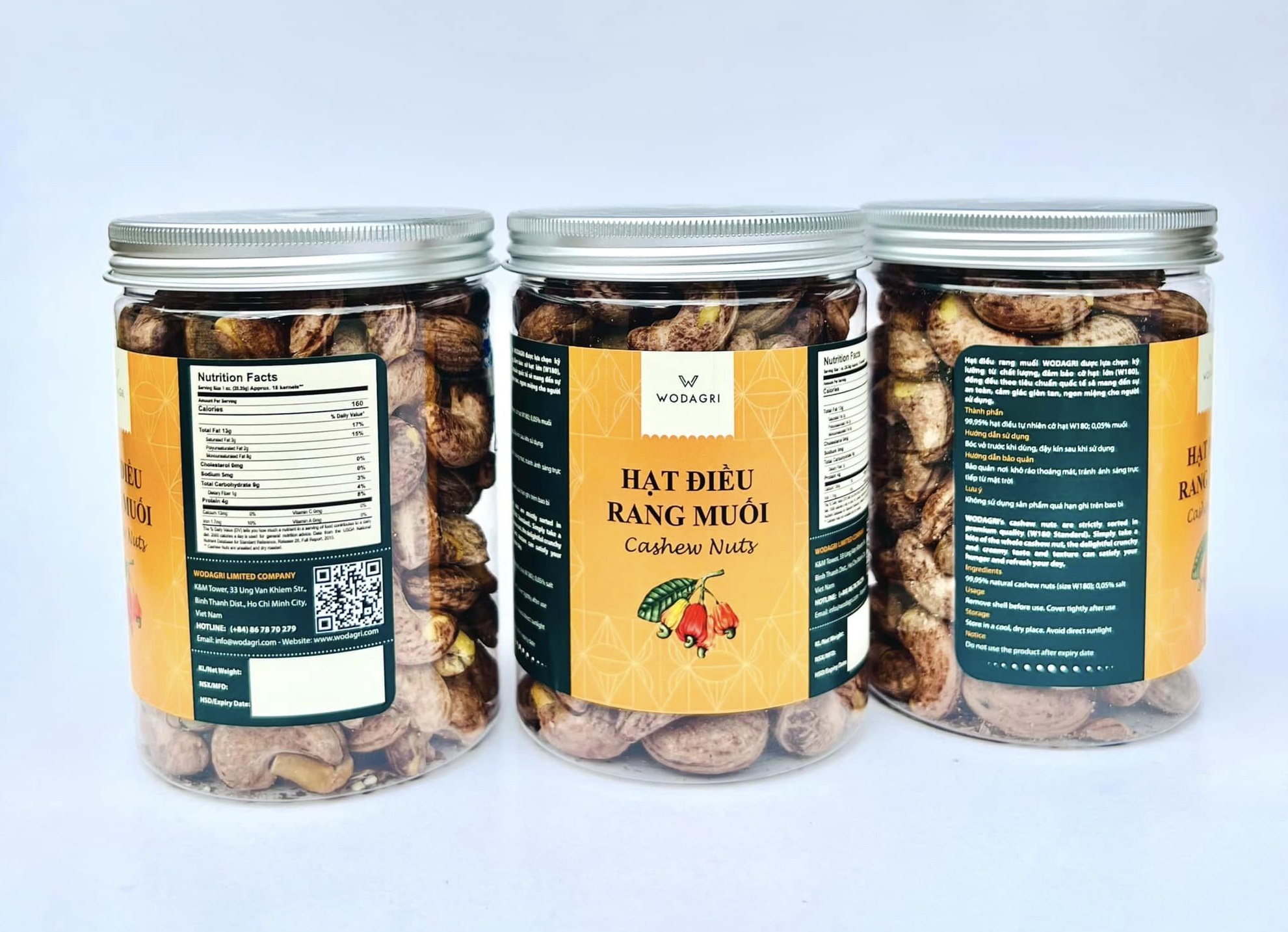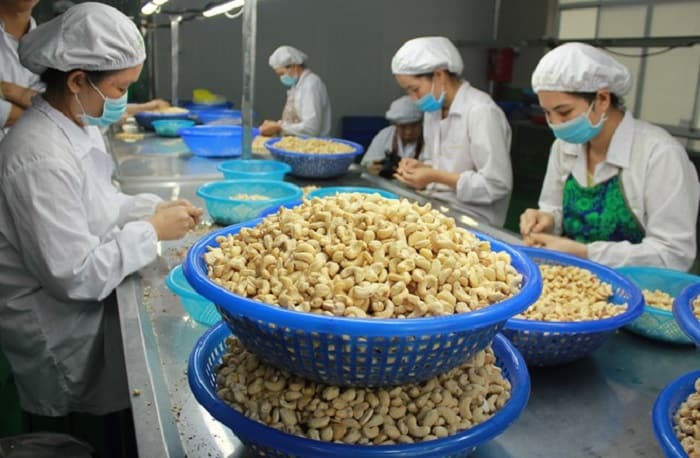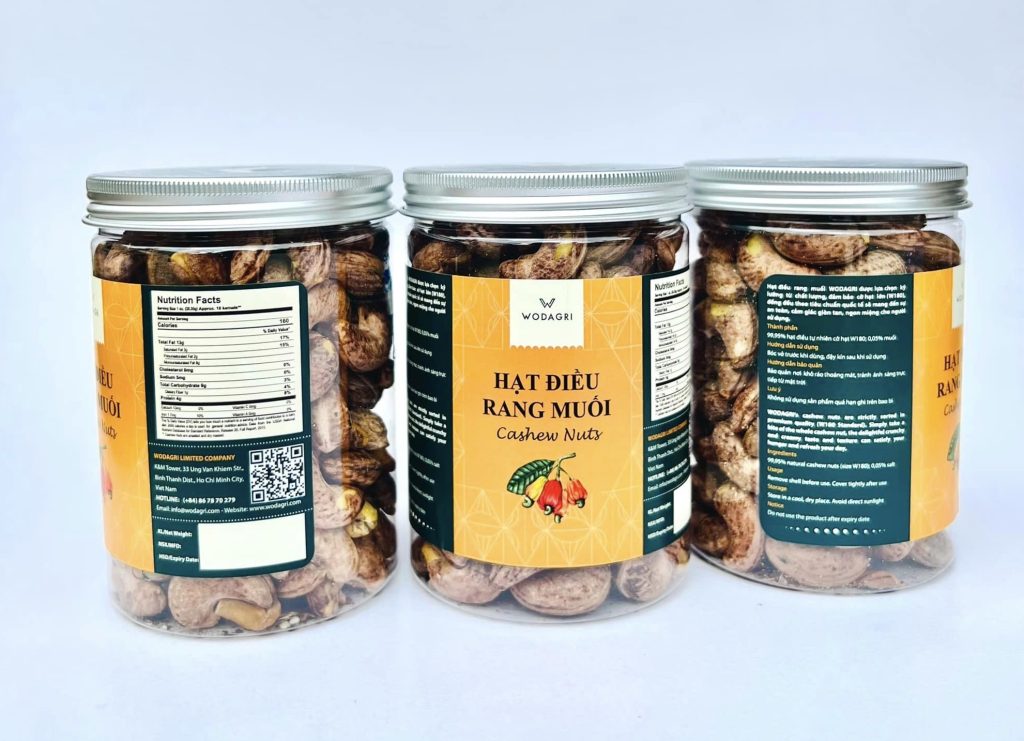According to a forecast by the Import-Export Department (Ministry of Industry and Trade), the global cashew nut market will grow by an average of 4.6% in the period 2022-2027. However, at the present stage, like many other commodities, cashew export is facing many difficulties and challenges, especially the impacts caused by the Covid-19 epidemic.
Cashew export faces many difficulties and challenges
According to data from the General Department of Customs, it is estimated that Vietnam’s cashew nut exports in July 2022 decreased by 3.2% in volume and 8.7% in value compared to June 2022, compared to June 2022. Comparing to July 2021, decreased by 17.5% in volume and 26.1% in value. Generally, in the first 7 months of 2022, cashew export reached 294 thousand tons, worth 1.76 billion USD, down 10.5% in volume and 12.1% in value over the same period in 2021.
The effects of the Covid-19 epidemic, resulting in increased freight rates, caused many orders that were signed in 2021 but still could not be delivered, having to be backlogged until 2022.
Notably, although the average export price was about $5,792/ton, up 1.45% over the same period in 2021. However, the price of raw cashew imports from Africa from the beginning of the crop to now has increased by 15- 20% over the same period. Export prices increased but have not caught up with the increase in import prices of raw materials, causing importers and processors to tend to be slow to buy raw materials.

According to the latest information of the General Department of Customs, from the beginning of the year to July 15, the whole country imported nearly 1.26 million tons, with a turnover of nearly 1.84 billion USD. Compared to the same period last year, the import volume decreased by more than 670 thousand tons, equivalent to a decrease of 34.82%; while the turnover decreased by 37%, equivalent to 1.077 billion USD.
High inflation in many major global economies causes people to tighten spending, especially for high-priced products. It is forecast that Vietnam’s cashew nut exports in the last months of 2022 will still face difficulties.
Besides adverse factors, the Import-Export Department assessed, the global cashew nut market is forecasted to grow by an average of 4.6% in the period 2022-2027. Global trends are favoring vegan and plant-based diets, favoring alternative protein sources, leading to increased demand for nuts and nut-based foods.
Enhance product value and increase market share in markets
In South America, the consumption of cashews in the consumer’s diet has remained stable. In Asia, cashews are used as a main ingredient to prepare various sweet and savory dishes.
China leads the region in importing cashew nuts. Nuts have become a staple of the Chinese diet since the introduction of the National Health Policy called “Dietary Guidelines for the Chinese People,” which emphasizes the daily consumption of nuts.
In Europe, due to the increasing health consciousness of consumers, cashew nut consumption is increasing. Recently, cashews have also been used more as an ingredient in dishes and snacks.

France is the third largest cashew nut import market in the European Union (EU). Although it has a tax advantage thanks to the EVFTA, the Vietnamese cashew industry has not exploited this market well. According to the International Trade Center (ITC), in the first 5 months of 2022, Vietnam’s cashew nut market share in the total import value of France decreased from 64.95% in the first 5 months of 2021 to 63.68% in the first 5 months of 2022.
According to the Vietnam Trade Counselor in France, the competitiveness of Vietnamese cashew nuts in this market is not high. In French supermarkets and hypermarkets, there are no Vietnamese-branded cashew products. Most businesses only focus on wholesale and have not paid attention to brand development.
In order to improve product value and increase market share of Vietnamese cashews in France, the EVFTA Agreement is a good tool, but in addition to the rules of origin to get preferential tariffs, meeting EU and French regulations is paramount importance. The EU and French food-related legal systems are quite complex, with separate regulations on mycotoxins, pesticide residues, heavy metal content, and microbiological contaminants. Before putting goods on the French market, businesses should find a lawyer’s office to assist in updating the latest information, building contracts and in the transaction process to avoid risks.
On the side of the Vietnam Cashew Association, Mr. Pham Van Cong – Chairman of the Association emphasized, besides focusing on the quality of raw materials, the quality of cashew exports, the cashew industry needs to promote in a number of key markets, especially markets that have signed Free Trade Agreements (FTAs) to make the most of the preferential import tax.


 中文 (中国)
中文 (中国)